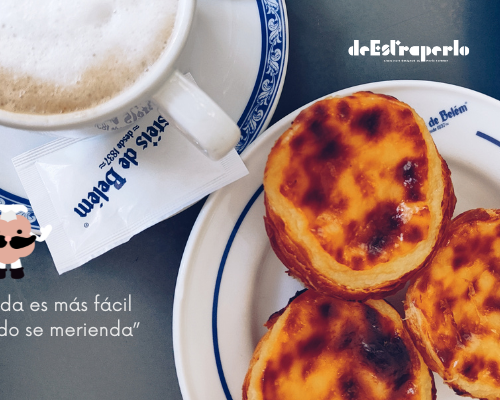
These are the materials we’re going to use:
- Less than 100m of jute (I can’t tell the exact amount, it depends… I used less than 2 skeins of 35m each, from TIGER)
- 3mm/C-D/11 crochet hoock (The size depends on how thick the yute is. Try to use the one you’ll use for a yarn as thick as your yute, as we don’t want to make big holes, we want a tight weave)
- Stitch marker
- Tapestry needle
- Scissors
Los materiales que necesitaremos:
- Menos de 100m, de yute (No te puedo decir la cantidad exacta porque depende… yo usé menos de 2 rollos de 35m, de TIGER)
- Aguja de ganchillo de 3mm (El tamaño de la aguja dependerá del grosor del material que uses. Para elegir aguja ten en cuenta que no nos interesa que queden agujeros. Usa la aguja que usarías para una lana de ese grosor.)
- Marcador
- Aguja lanera
- Tijeras

The box has 3 parts: the basket, the top and the handle. We’ll start with the basket. In order to crochet the basket we’ll make a proportional flat circle, with the technique we’ve learnt and practiced a lot of times with my tutorials:
1st round (rd): 6 single crochet (sc) in magic loop.
2nd rd.: 6 increases (inc) (12 sc in total)
3rd rd.: [1 inc, 1 sc] 6 times (x6) (18 sc)
4th rd.: [1 inc, 2 sc] x6 (24 sc)
5th rd .: [1 inc, 3 sc] x6 (30 sc)
6th rd .: 2 sc, 1 inc, [4 sc, 1 inc] x5, 2 sc (36 sc)
7th rd.: [1 inc, 5 sc] x6 (42 sc)
8th rd.: 3 sc, 1 inc, [6 sc, 1 inc] x5, 3 sc (48 sc)
9th rd.: [1 inc, 7 sc] x6 (54 sc)
10th rd.: 4 sc, 1 inc, [8 sc, 1 inc] x5, 4 sc (60 sc)
La caja consta de 3 piezas: El cesto, la tapa y el asa. Empezaremos con el cesto. Para tejer la base del cesto haremos un círculo proporcional plano, con la técnica que ya hemos aprendido y practicado muchas veces en mis tutoriales:
1ª vuelta (vta): 6 puntos bajos (pb) en anillo mágico.
2ª vta.: 6 aumentos (aum) (12 pb)
3ª vta.: [1 aum, 1 pb] 6 veces (x6) (18 pb)
4ª vta.: [1 aum, 2 pb] x6 (24 pb)
5ª vta.: [1 aum, 3 pb] x6 (30 pb)
6ª vta.: 2 pb, 1 aum, [4 pb, 1 aum] x5, 2 pb (36 pb)
7ª vta.: [1 aum, 5 pb] x6 (42 pb)
8ª vta.: 3 pb, 1 aum, [6 pb, 1 aum] x5, 3 pb (48 pb)
9ª vta.: [1 aum, 7 pb] x6 (54 pb)
10ª vta.: 4 pb, 1 aum, [8 pb, 1 aum] x5, 4 pb (60 pb)
11ª vta.: [1 aum, 9 pb] x6 (66 pb)
12ª vta.: 66 pb en back loop (bl)
13ª a 30ª vta.: 66 pb
Corta el hilo y remata.

Second piece will be the top. It’s like the basket but a bit bigger and much shorter. First rounds are exactly like the basket:
1st rd to 11th rd.: like the basket.
12th rd.: 5 pb, 1 aum, [10 pb, 1 aum] x5, 5 pb (66 pb)
13th rd.: 72 sc
14th rd.: 72 sc in bl
15th to 18th rd.: 72 sc
Cut the yute and fasten off.
La segunda pieza de la caja será la tapa. Es igual que el cesto, pero un poco más grande y mucho menos alta. Empezamos igual que el cesto:
1ª a 11ª vta.: Tejer igual que en el cesto
12ª vta.: 5 pb, 1 aum, [10 pb, 1 aum] x5, 5 pb (72 pb)
13ª vta.: 72 pb
14ª vta.: 72 pb en bl
15ª a 18ª vta.: 72 pb
Corta el hilo y remata.

And last but not least… the handle. Leave a long tail at the beginning and at the end, to attacht it to the cover later.
1st rd.: Chain (ch) 16
2nd and 3rd rd.: 15 sc
Attach the handle to the top by sewing with the tapestry needle.
Y por último el asa. Deja una hebra larga al empezar las cadenetas y otra al terminar la 3ª vta., para poder coser más tarde el asa a la tapa.
1ª vta.: 16 cadenetas (cad)
2ª y 3ª vta.: 15 pb
Cose el asa a la tapa usando la aguja lanera.

If you’re fond of rustic style, like me, you should try different materials, from natural fibers to synthetic ones. There’s no limit, just try and see what happens. You can also try different sizes, make it taller, or smaller… you can also mix other colour materials or even use 2 different threads at the same time, one of jute and another one of cotton for example… So, you know, use all these tips and you’ll be ready to redecorate your home!
Si os gusta el estilo rústico, como a mi, probad distintos materiales, desde fibras naturales hasta sintéticas. No hay límite, tú prueba y a ver qué sale. También podéis probar distintos tamaños, más alta, más pequeña… Otra idea es mezclar con otros materiales de otros colores o incluso utilizar dos hebras distintas a la vez, una de yute y otra de algodón, por ejemplo… Pues ya sabes, pon en práctica todas estas ideas, y a redecorar tu casa!






